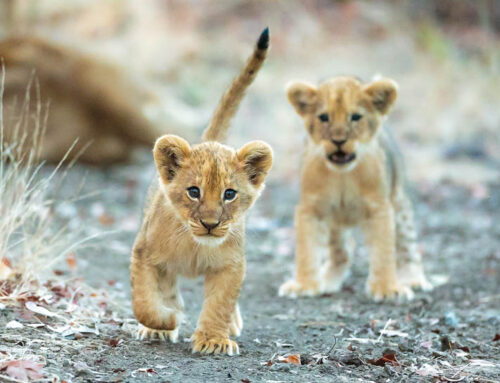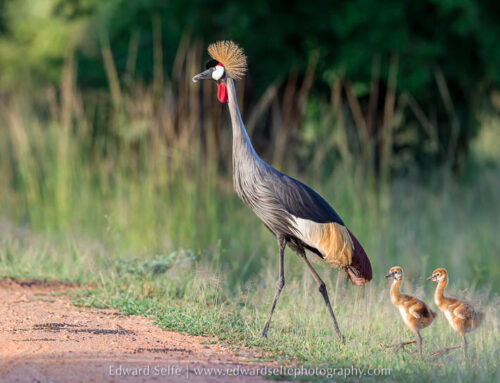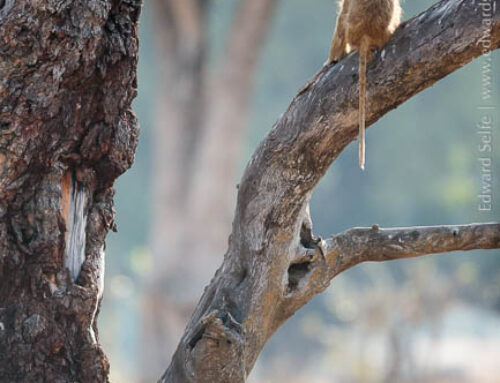If you don’t bump into monkeys around your camp, hippos may be the first wildlife you encounter on arrival in Luangwa. From your safari camp, you will likely have wide views of the river; and in Luangwa, wherever there is water, there will be hippos!

Hippos are unmistakable; apart from rhinos, which are sadly no longer found in Luangwa, they do not resemble any other African mammal. They have large heads ending in a wide, blunt muzzle which they carry close to the ground. Combined with rotund bodies and short legs, there is little to suggest that they are a water-dwelling creature!
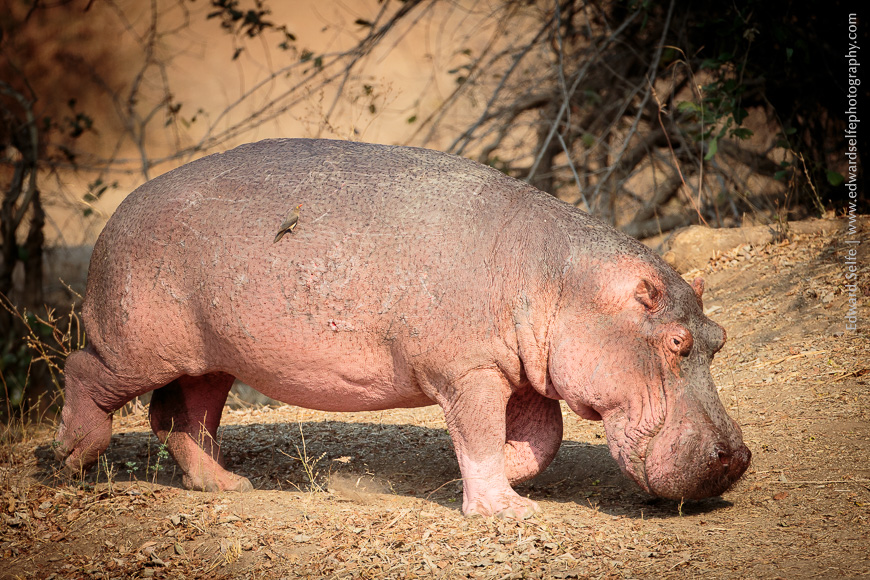
However, they are surprisingly adept in the water; they swim well, are easily able to maintain their own buoyancy, and move quickly across the surface or dive when they feel alarmed. While it’s hard to know exactly how long they can survive on one breath, they regularly submerge for 2-3 minutes between breaths when resting, and can hold for considerably longer when fleeing danger.
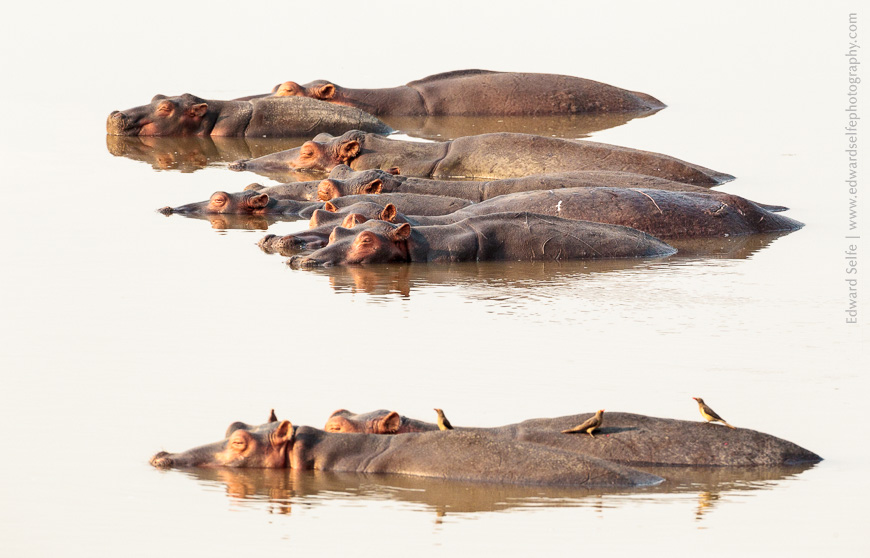
They live a life of two halves: by day they can be found in the waterways, or on the sand-banks alongside. Depending on the season and the outside temperature, they may spend hours sunbathing when it’s cold, or mostly submerged in the hotter months. There is little – if anything – for them to eat in most of the water systems, so these daytime hours are spent at rest.
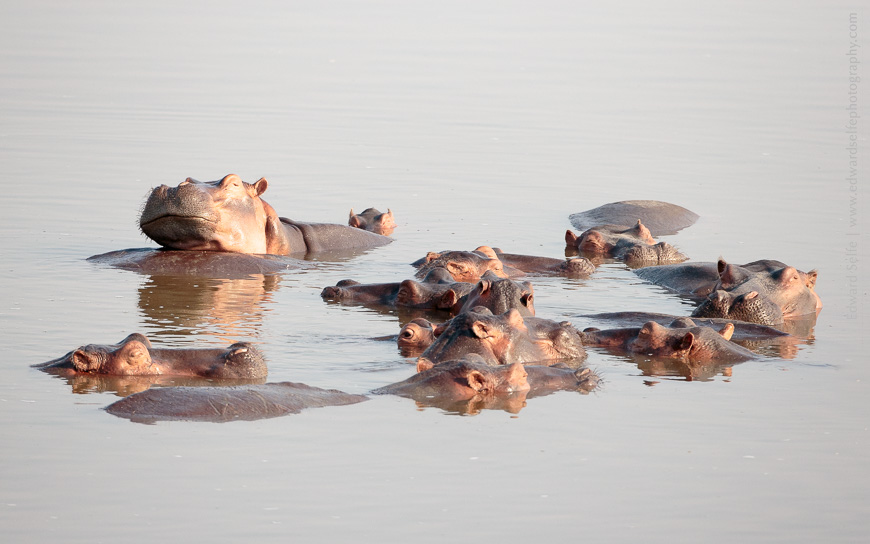
By night, hippos emerge from the river to feed. Under the cover of darkness – and without harsh daytime temperatures to compete with – they roam long distances in search of forage. They are vegetarian predominantly, cropping grass, leaves, small shrubs and some fruits with their wide ‘lawn-mowing’ lips. For long periods in the Luangwa, there is little nutrition for hippos, necessitating long journeys at night and hours of rest and inactivity by day.
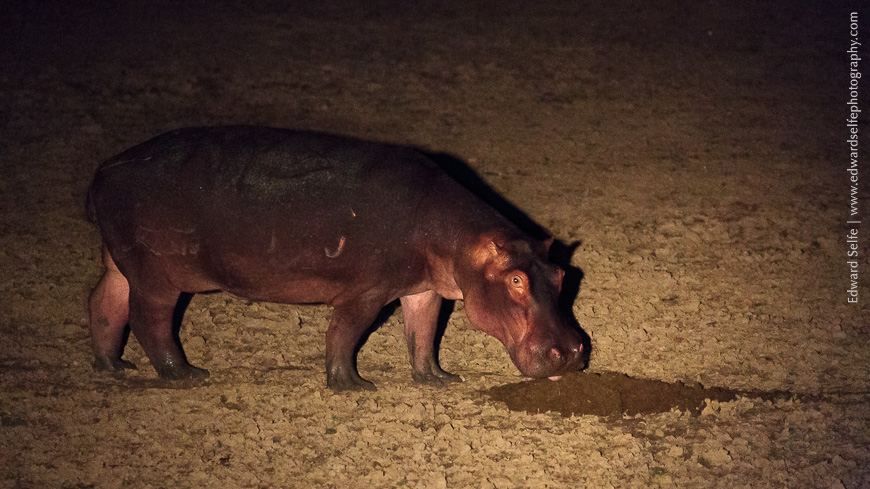
At times, forage supply becomes a considerable problem for these bulk-grazers. As the waterways dry up and ever more hippos are forced into the remaining supply, the competition for food becomes intense. At times like these, hippos have been known to feed on carrion or even show interest in members of their own kind who have died in the nutritional squeeze. In the photo above, a hippo sniffs the gut-contents of a freshly-killed Waterbuck which lions are still feeding on (just out of shot). Of course, this is partly digested foliage, so a reasonable source of food, but it’s only late in the year that we see hippos behaving in such a way.
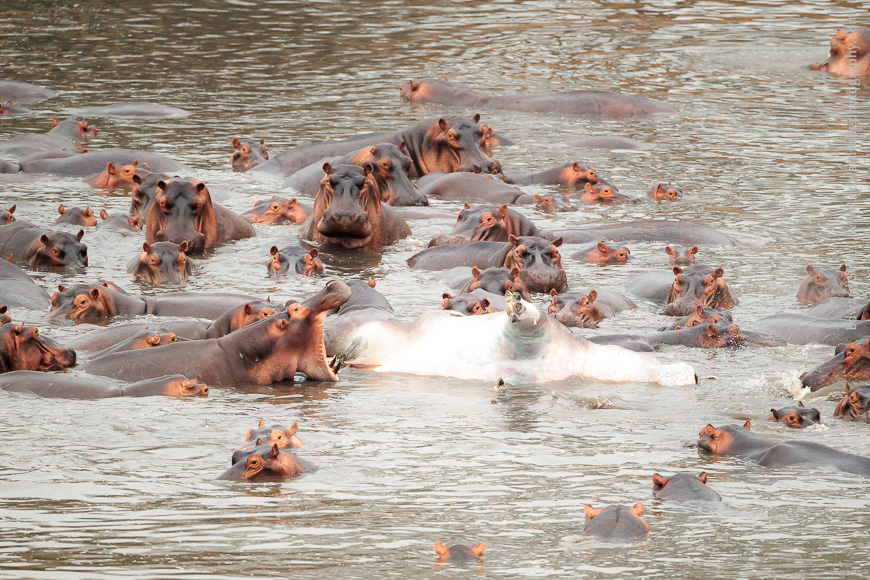
The photo above shows a small section of the river which is home to 500+ hippos at the end of the dry season. One of their number has not survived the harsh times and is rotting in the fetid water. Several hippos appeared to show “feeding” interest in the carcass, trying to bite into it, perhaps suggesting serious nutritional pressure.
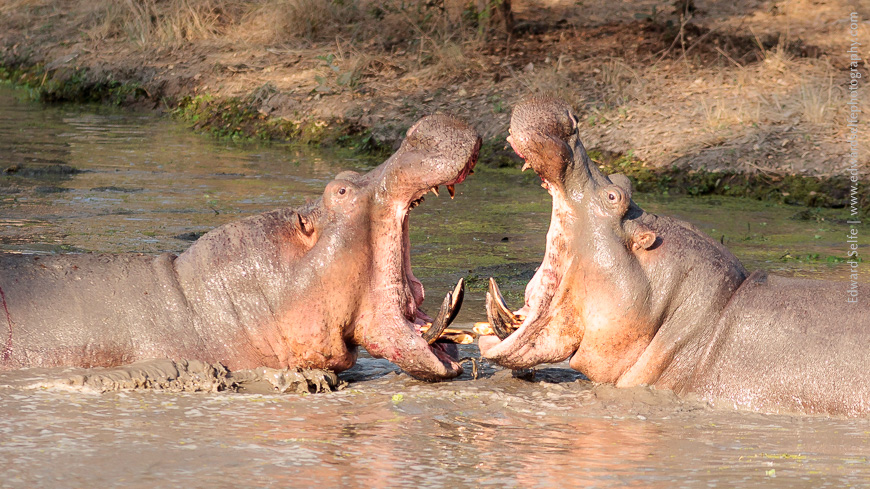
Hippos are best known for their “aggression” and for “killing more people than any other African mammal”. Males are certainly aggressive when defending territory against other males, which becomes a common occurrence when pressure for living space intensifies. Here, two bulls lock jaws in a fearsome wrestling match – neither wants to close his jaws for fear that that other will bite through the upper or lower mandible. These battles can be bloody and protracted, often ending with one or both sustaining grievous injuries. The victor holds the disputed territory and the mating rights to the associated females.
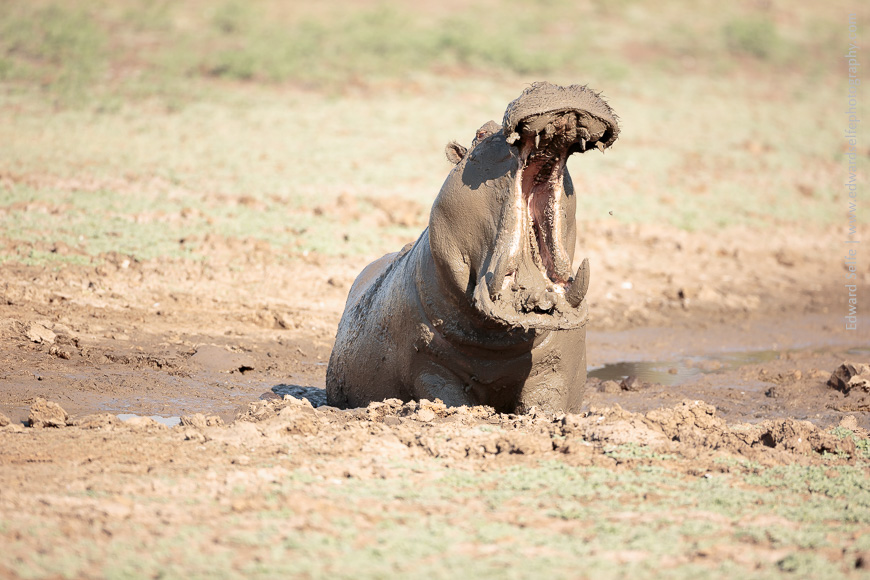
They will show aggression towards people when access to their watery safe-haven is blocked, but generally they are fearful of humans. In the Luangwa, elephants, mosquitoes and crocodiles certainly kill more people than hippos. The photo above shows a rare time when a bull hippo showed repeated aggression towards my vehicle. From the ‘safety’ of his muddy wallow, he repeatedly displayed his massive canine teeth, and shook his head from side to side; this display is often accompanied by a throaty bellow.
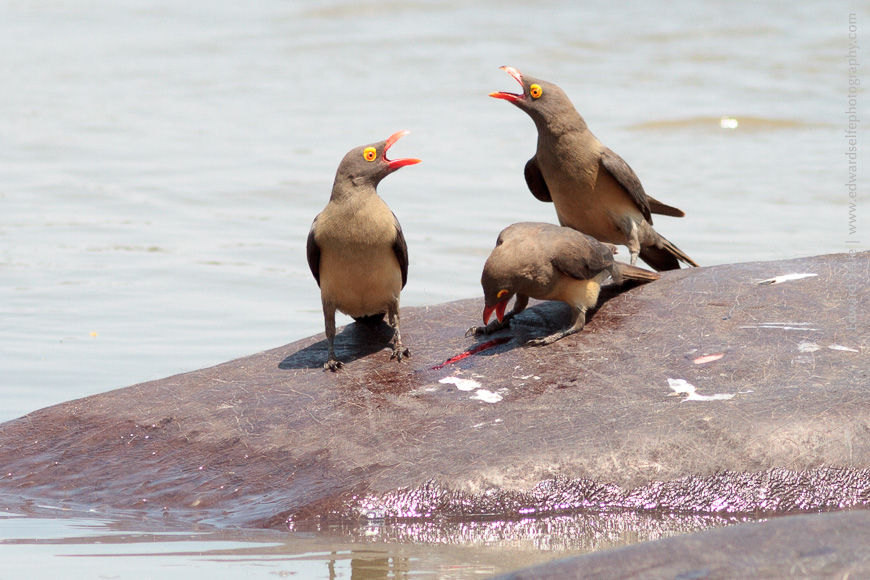
Hippos have very little hair on their bodies, making life easy for attendant Oxpeckers who relentlessly scour the skin for parasites and dead tissue. These birds’ rattling calls often alerts hippos to the approach of danger – including humans – in return for their free meal.
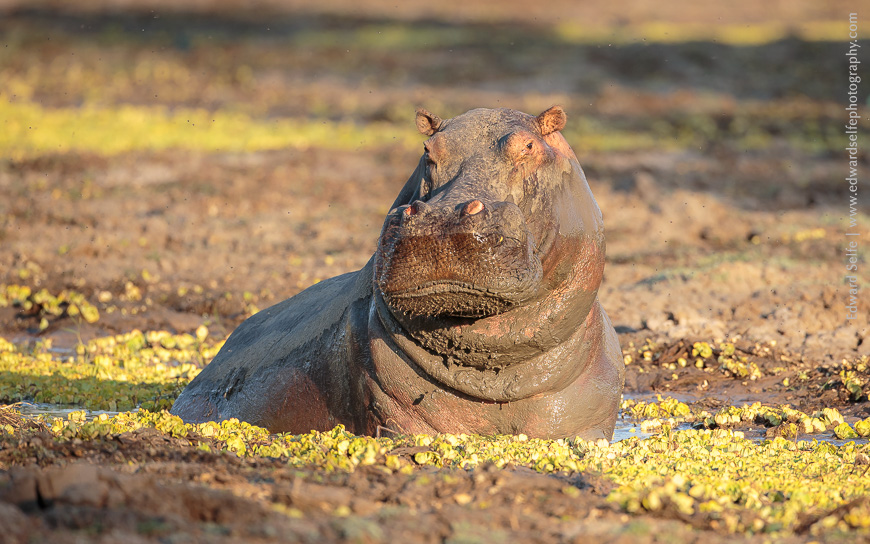
Hippos are plentiful in the Luangwa, and evidence of them is everywhere; dung sprayed across shrubs, noisy honking sounds from water-sources and well-used pathways with a distinctive central ridge. More subtle, but perhaps most important, are the channels that hippos forge in lagoons and waterways throughout their range; their regular wanderings maintain these drainage channels and prevent the silting up of water courses.
The bulk feeding activities of hippos also maintain lawns of short grass which are enjoyed by smaller grazers such as antelope and rodents. Without the hippos’ attendance, these areas would quickly be overwhelmed by tall grass.
Hippos are a charismatic and essential member of the African ecosystem, and the Luangwa is one of their strongholds. Come and see for yourself.

